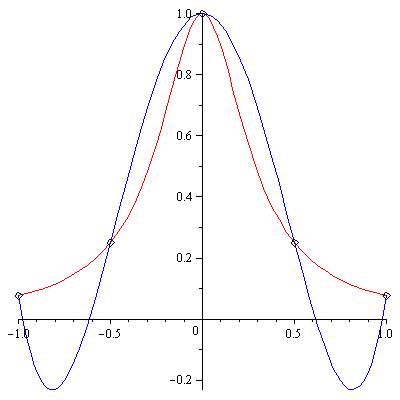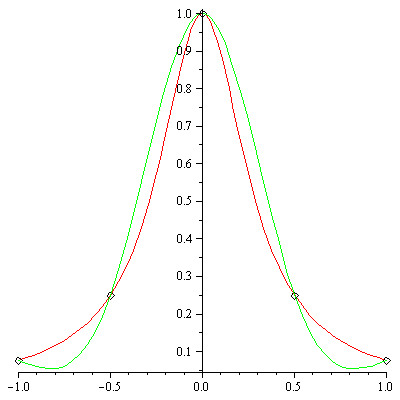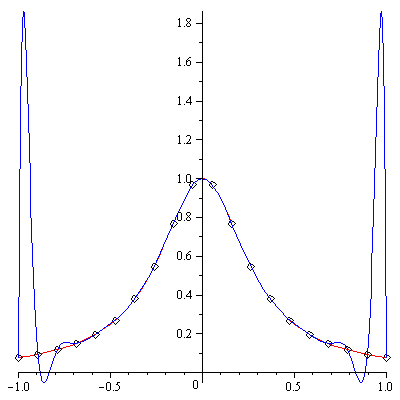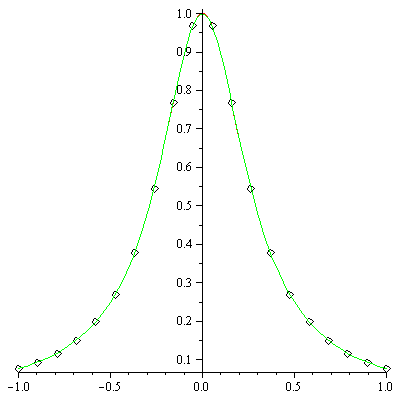Summary
Given a set of ![]() data points, interpolation by a polynomial of degree
data points, interpolation by a polynomial of degree ![]() can be bad when
can be bad when ![]() is large.
is large.
Illustration of the Runge Phenomenon
Summary
Given a set of ![]() data points, interpolation by a polynomial of degree
data points, interpolation by a polynomial of degree ![]() can be bad when
can be bad when ![]() is large.
is large.
Define a function
As an example, consider the smooth function ![]() .
.
| > |
| > |
| (1) |
| > |
 |
| > |
Interpolate at 5 equally-spaced points
| > |
| (2) |
| > |
| (3) |
| > |
| (4) |
| > |
| (5) |
| > |
| > |
| > |
| > |
| > |
| > |
| (6) |
| > |
| > |
 |
| > |
A cubic spline fit does much better
| > |
| > |
| > |
 |
| > |
Interpolate at a larger number of equally-spaced points
| > |
| (7) |
| > |
| > |
| > |
| > |
| > |
| > |
| > |
| > |
| > |
| > |
 |
| > |
A cubic spline fit does much better
| > |
| > |
| > |
 |
| > |